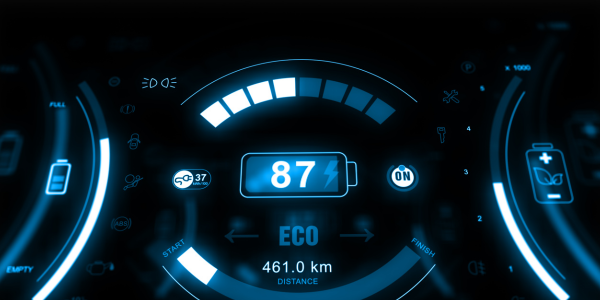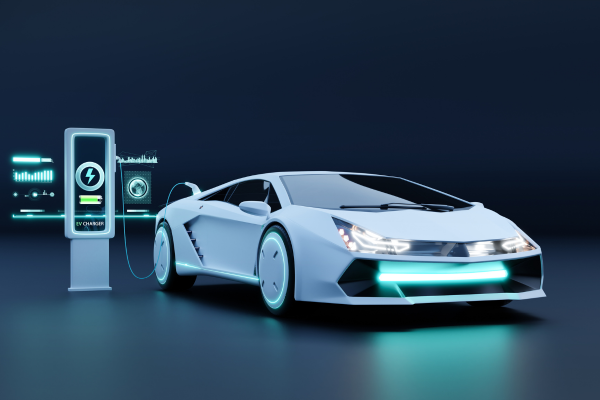Table of Contents
- Introduction
- Factors Influencing Electric Vehicles Range.
- Technological Advancements of Electric Vehicles
- Implications for the Future of Electric Vehicles
- Conclusion
- Frequently Asked Questions
Introduction:
Factors Influencing Electric Vehicle Range:
1. Battery Capacity:

- The capacity of the vehicle’s battery pack is a primary determinant of its range. Larger battery packs typically offer greater energy storage capacity, allowing for longer driving distances on a single charge.
- Battery capacity is measured in kilowatt-hours (kWh), with higher kWh ratings corresponding to increased range potential. However, larger battery packs also tend to be heavier, affecting vehicle efficiency and performance.
2. Efficiency:

- The efficiency of an electric vehicle, measured in miles per kilowatt-hour (miles/kWh) or kilometres per kilowatt-hour (km/kWh), plays a significant role in determining range.
- Factors such as aerodynamics, tire resistance, vehicle weight, and driving behavior impact efficiency. Streamlined designs, low-resistance tires, and regenerative braking systems can improve vehicle efficiency and extend range.
3. Driving Conditions:

- Driving conditions, including terrain, weather, and traffic patterns, can affect electric vehicle range. Uphill driving, high winds, extreme temperatures, and stop-and-go traffic can increase energy consumption and reduce range.
- EVs typically achieve optimal range in moderate temperatures and flat terrain, where energy demands are minimized. Planning routes and driving habits to optimize efficiency can help maximize range in varying conditions.
4. Vehicle Load and Use:
- The payload carried in the vehicle, such as passengers, cargo, and accessories, can impact range by increasing energy consumption.
- The use of auxiliary systems, such as heating, air conditioning, and entertainment systems, can also draw power from the battery, reducing available range.
Technological Advancements of Electric Vehicles:
1. Battery Technology:
- Advances in battery chemistry, materials, and manufacturing processes have led to significant improvements in energy density, cycle life, and charging capabilities.
- Lithium-ion batteries, the most common type used in electric vehicles, continue to undergo refinement and innovation, enabling higher energy storage capacity and faster charging times.
2. Charging Infrastructure:

- The availability of fast-charging infrastructure, capable of replenishing a significant portion of the battery’s charge in a short amount of time, enhances the practicality of electric vehicles for long-distance travel.
- Continuous expansion and improvement of charging networks, including DC fast chargers along highways and urban corridors, contribute to increased confidence and convenience for EV drivers.
3. Range Estimation and Predictive Analytics:
- Vehicle manufacturers employ sophisticated algorithms and predictive analytics to estimate range based on factors such as battery state of charge, driving conditions, and historical usage data.
- Real-time range estimation, displayed on the vehicle’s dashboard or infotainment system, provides drivers with valuable information to plan their journeys and manage range anxiety.
Implications for the Future of Electric Vehicles:
1. Consumer Adoption:
- Understanding electric vehicle range is critical for consumer adoption and acceptance of electric mobility. Providing accurate range estimates and addressing range anxiety concerns are key factors in encouraging widespread adoption of EVs.
- Continued improvements in battery technology, charging infrastructure, and vehicle efficiency will further enhance the appeal and practicality of electric vehicles for consumers.
2. Environmental Impact:

- The electrification of transportation offers significant environmental benefits, including reduced greenhouse gas emissions, air pollution, and dependence on fossil fuels.
- By extending electric vehicle range and expanding charging infrastructure, policymakers and industry stakeholders can accelerate the transition to a cleaner, more sustainable transportation system.
Conclusion:
- Range anxiety, the fear of running out of battery charge before reaching a destination, remains a significant barrier to electric vehicle adoption. Addressing range anxiety through accurate range estimation, improved charging infrastructure, and consumer education initiatives is essential for building confidence in electric vehicles.
- Electric vehicle manufacturers are investing in research and development to extend range and enhance battery performance. Innovations such as solid-state batteries, fast-charging technologies, and vehicle-to-grid (V2G) integration hold promise for further improving electric vehicle range and usability.
- The electrification of fleets, including commercial vehicles, buses, and delivery trucks, presents opportunities to leverage electric vehicle technology for economic and environmental benefits. Longer range capabilities and enhanced charging infrastructure support the electrification of these sectors, reducing emissions and operating costs.
- Government incentives and regulations play a crucial role in incentivizing electric vehicle adoption and supporting infrastructure development. Policies such as tax credits, rebates, and emissions standards encourage consumers and businesses to invest in electric vehicles and accelerate the transition to cleaner transportation.
- Collaboration between stakeholders, including automakers, utilities, governments, and environmental organizations, is essential for advancing electric vehicle technology and infrastructure. By working together to overcome barriers and promote innovation, stakeholders can drive progress towards a sustainable transportation future.
- As electric vehicle range continues to improve and charging infrastructure expands, electric mobility has the potential to transform the way we travel, reducing emissions, enhancing energy security, and improving air quality for communities around the world.
- The future of electric vehicle range is bright, with ongoing advancements in technology, infrastructure, and policy driving progress towards a cleaner, greener transportation system. By embracing electric mobility and investing in sustainable transportation solutions, we can create a better future for generations to come.
Frequently Asked Questions:
In 2024, the average range of electric vehicles has significantly improved compared to previous years. Many EVs now offer ranges of over 300 miles on a single charge, with some premium models exceeding 400 miles. This increase in range is attributed to advancements in battery technology and improvements in vehicle efficiency.
Charging times for electric vehicles vary depending on factors such as the vehicle’s battery size, charging infrastructure, and the type of charger used. In 2024, with the widespread adoption of fast-charging technology, EVs can be charged to 80% of their capacity in as little as 30 minutes at high-power charging stations. At home or using slower chargers, a full charge may take several hours.
Yes, in 2024, there are electric vehicles with ranges that can rival or even surpass those of traditional gasoline cars. Some premium electric models offer ranges of over 400 miles on a single charge, which is comparable to many gasoline-powered vehicles. As battery technology continues to advance, it is expected that EV ranges will further improve and become even more competitive.
Several factors can influence the range of an electric vehicle, including driving behavior, environmental conditions, vehicle speed, temperature, and terrain. Aggressive driving, cold weather, high speeds, and hilly terrain can all contribute to reduced range. Additionally, factors such as the vehicle’s weight, aerodynamics, tire pressure, and battery health can also impact its range.
Range estimates provided by electric vehicles are generally reliable but can vary depending on driving conditions and individual driving habits. Manufacturers typically provide range estimates based on standardized testing procedures, but real-world range may differ. Factors such as temperature, terrain, speed, and use of accessories (like air conditioning or heating) can all affect actual range. It’s advisable for EV drivers to familiarize themselves with their vehicle’s energy consumption patterns to better understand and manage their range expectations.

